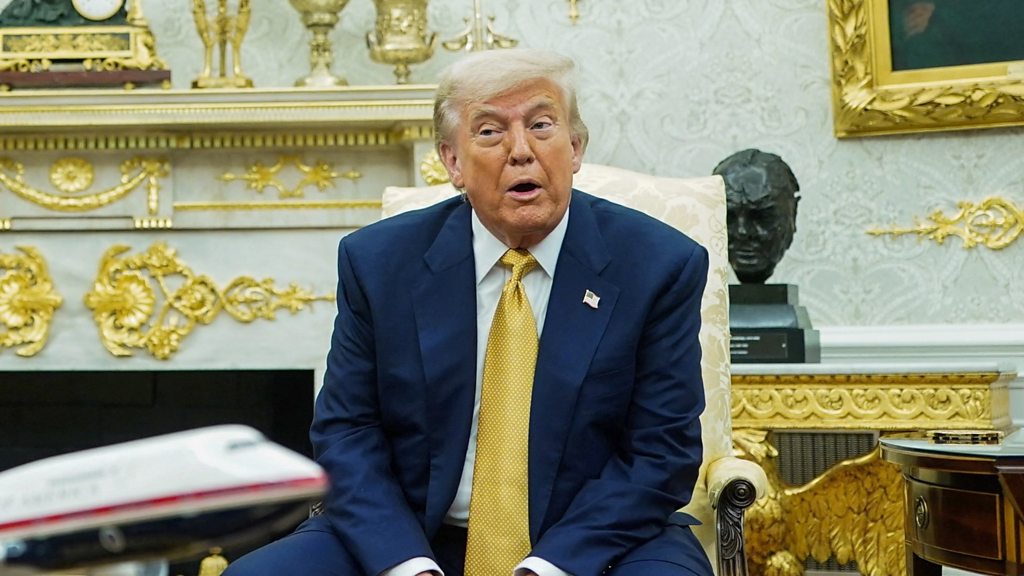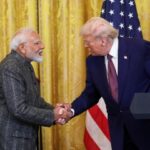Introduction
Former President Donald Trump has never been one to shy away from controversial statements, especially when it comes to economic policy. In a recent interview, Trump floated the idea of firing Jerome Powell, the current Chair of the Federal Reserve, if he were to return to the White House in 2025. While Trump acknowledged that such a move is “very unlikely,” the mere suggestion has reignited debates about the independence of the Federal Reserve, the role of the U.S. president in monetary policy, and the potential consequences of politicizing the nation’s central bank.
This article explores Trump’s history with the Fed, the legal and political implications of firing a Fed chair, and why such an action—though theoretically possible—would be unprecedented and potentially destabilizing for the U.S. economy.
Trump and the Fed: A Rocky Relationship
Donald Trump’s relationship with the Federal Reserve has been tumultuous. During his presidency, he frequently criticized Jerome Powell, whom he appointed in 2018, for not cutting interest rates aggressively enough. Trump’s public attacks on Powell were unusual—past presidents have typically avoided openly pressuring the Fed to maintain its independence.
In 2019, Trump even explored whether he could legally remove Powell from his position, only to be told by advisers that such a move would be politically and economically risky. While the Federal Reserve is an independent entity, its chair serves a four-year term and can technically be dismissed by the president “for cause.” However, no president has ever fired a Fed chair, and legal scholars argue that doing so without substantial justification could trigger a constitutional crisis.
Trump’s recent comments suggest that his frustrations with Powell haven’t faded. If reelected, would he actually attempt to oust the Fed chair, or is this just another example of Trump’s rhetorical brinkmanship?
Can a President Actually Fire the Fed Chair?
The Federal Reserve was designed to operate independently from political pressure to ensure that monetary policy decisions are made based on economic data rather than short-term political interests. However, the law does provide a mechanism for the president to remove a Fed chair—albeit under narrow circumstances.
Legal Basis for Removal
Under the Federal Reserve Act, the president can remove a Fed board member (including the chair) “for cause.” But what constitutes “cause” is legally ambiguous. Historically, this has been interpreted to mean misconduct, neglect of duty, or incapacity—not simply policy disagreements.
If Trump (or any president) attempted to fire Powell without clear justification, it would likely lead to:
- Legal challenges (potentially reaching the Supreme Court)
- Market instability (investors rely on Fed independence for economic predictability)
- Loss of global confidence in the U.S. dollar and financial system
Historical Precedent
No president has ever fired a Fed chair. The closest precedent was in the 1970s when President Richard Nixon pressured Fed Chair Arthur Burns to keep interest rates low, contributing to runaway inflation. However, even Nixon did not attempt to remove Burns.
If Trump were to follow through, it would set a dangerous precedent, effectively turning the Fed into a political tool rather than an independent economic stabilizer.
Why Firing Powell Would Be a Risky Move
Even if Trump could legally justify removing Powell, the economic and political fallout would be severe.
1. Market Turmoil
The Fed plays a crucial role in maintaining financial stability. If investors believed the central bank was being politicized, it could lead to:
- Stock market volatility
- A spike in bond yields
- A weaker U.S. dollar
2. Inflation Fears
One of the Fed’s primary responsibilities is controlling inflation. If the president could fire the Fed chair for raising interest rates (as Trump has previously suggested), it could undermine efforts to combat rising prices, leading to long-term economic damage.
3. Erosion of Fed Independence
Central bank independence is a cornerstone of modern economic policy. Countries where leaders interfere with monetary policy often face hyperinflation and currency crises (e.g., Turkey under Erdogan). If the U.S. went down this path, it could harm its reputation as a stable financial hub.
4. Political Backlash
Even many Republicans support Fed independence. A move to fire Powell could alienate moderate voters and business leaders who prioritize economic stability over political loyalty.
Is This Just Trump’s Negotiating Tactic?
Given the risks, it’s possible Trump’s comments are more about leverage than actual intent. By suggesting he might replace Powell, Trump could be:
- Signaling to the Fed to avoid aggressive rate hikes ahead of the 2024 election
- Appealing to his base, which often views the Fed as an elitist institution
- Testing boundaries to see how much influence he can exert over monetary policy
Trump has a history of using bold rhetoric to shape narratives, and this may be another example of that strategy.
What Would Happen If Trump Tried to Fire Powell?
Scenario 1: Legal Block
Courts might rule that “policy differences” don’t qualify as “cause” for removal, preventing Trump from ousting Powell.
Scenario 2: Powell Resigns Under Pressure
If Trump made Powell’s position untenable through public attacks, Powell could choose to step down—though this would still damage Fed credibility.
Scenario 3: Congress Intervenes
Lawmakers could pass legislation further insulating the Fed from political interference, though this would require bipartisan support.
Conclusion: A Dangerous Idea, but Unlikely to Happen
While Trump’s comments about firing Jerome Powell have made headlines, the actual likelihood of him doing so remains low. The legal, economic, and political hurdles are simply too great. However, the mere discussion of such a move underscores the growing politicization of the Federal Reserve—a trend that could have lasting consequences for U.S. economic stability.
If Trump returns to the White House, his relationship with the Fed will be a key issue to watch. But for now, the independence of America’s central bank remains intact—even if it’s facing more public scrutiny than ever before.

